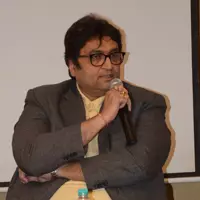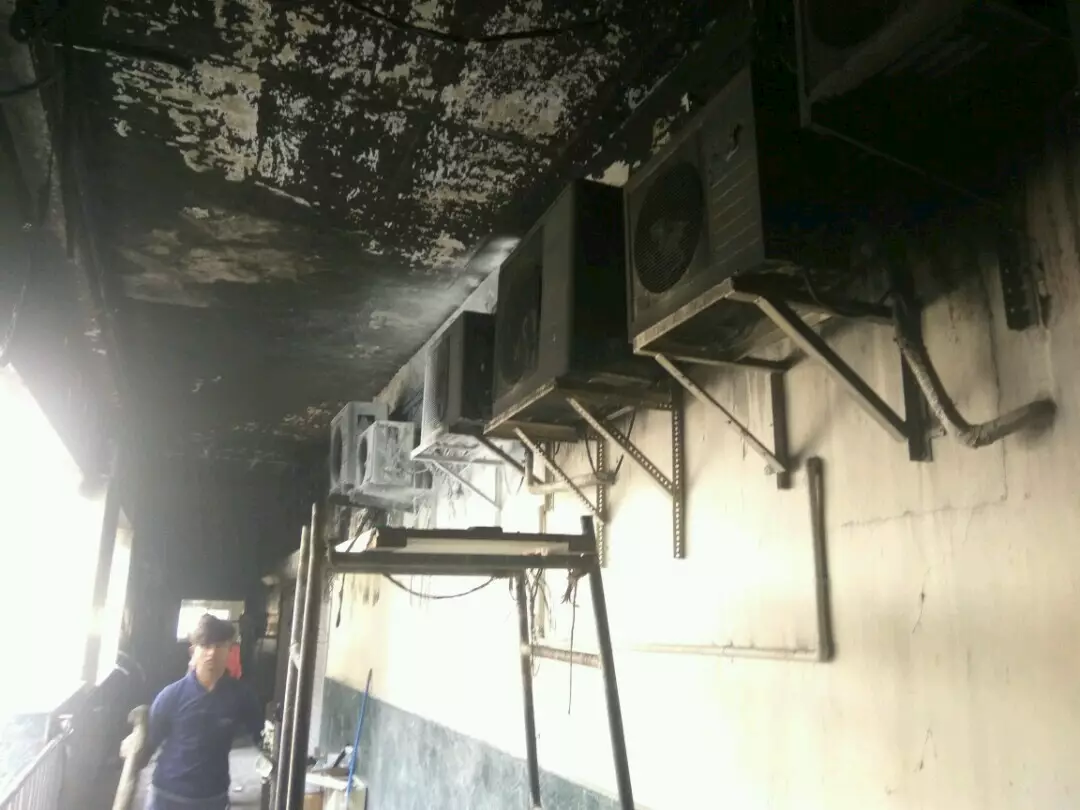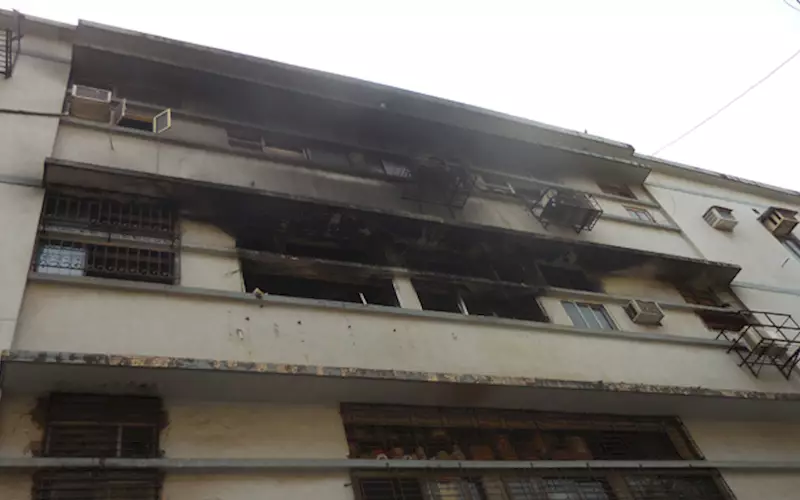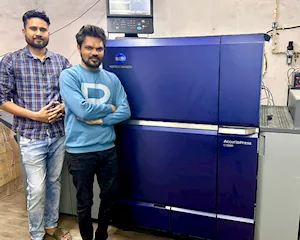In the land of fire: lessons from an accident - The Noel D'Cunha Sunday Column
On the evening of 14 November 2017, a part of Adhyaru Industrial Estate in Lower Parel, Mumbai caught fire.
Jehangir Surti of Prodon Enterprises shared an image of the raging fire, a little away from his print unit. “A fire like this in a print unit can be devastating. A commercial printer, already reeling under the burden of declining sales, will have no option but to close down,” he said.
In this Sunday Column, Print CEOs discuss, why fire preparedness should be taken seriou
17 Nov 2017 | By Noel D'Cunha
Darwin has considered fire, one of the two most significant achievements of humanity. The other being language. Wherever they have gone, they have carried it with them. In the Vedic mythology of ancient India, Agni is the Hindu God of fire, regarded as the friend and protector of humanity, in particular, he safeguards the home. But when fire strikes, premises can become tinderboxes, and devastate a business.
On 14 November 2017, a part of Adhyaru Industrial Estate in the busy Sun Mill Compound in Mumbai’s Lower Parel caught fire. It was a garment business on the second floor, which not only reduced the equipment, furniture and material in the company’s premises to ashes, but also its neighbouring galas. The fire also had its effect on a floor below. The water sprayed to douse the fire trickled into the premises of Unique Photo Offset Services (UPOS), soaking printed stock, other material, furniture and flooring.

Gautam Nerker of UPOS
Gautam Nerker, director at UPOS, said, “Some equipment have been covered, and I do not know the extent of the damage.”
Accident waiting to happen
The industrial galas in Mumbai, and for that matter, across India, are filled with small companies, some with very low standards of management. This particular industrial estate has had a history of fire accidents. “It almost happens every year,” said Nerkar. “There are a number of garment factories as well as printing units. But the accidents have invariably occurred in the garment business galas, never in the printing galas.”
The fire was a technical disaster, but there’s no confirmation yes, however, a spark from a short-circuit as reported, has something to do with the fire, yet it says something deeply in terms of organisation, control, safety culture and responsibility of those managing the estate.

Nitin Shah of Award
Nitin Shah, director at Award Offset & Packaging, who has a small gala in the next wing of the Adhyaru Industrial Estate was present at the time of the incident. “In this case, I heard that the cause of fire was a short-circuit in the air-conditioning unit.”
Shah added, “The garment manufacturers in the industrial estate also use electric ironing box, and negligence while using the ironing box, also results in the fire. Also, the fire broke out at around 6.30pm, when the said gala was closed for the day. Hence the real cause of the fire is still not known.”
Prevention is better than cure
According to India Risk Survey 2017, the National Crime Record Bureau has reported a total of 18,450 cases of fire accidents in India in 2015, with 1,193 persons injured and 17,700 killed. The cause-wise analysis of fire accidents concluded that 42.1% of deaths (7,445 out of 17,700) were due to fire accidents in residential buildings.
The majority of fire accidents were reported in Maharashtra, which accounted for 22% of all the fire incidents reported.
According to a report by CAG, Maharashtra, India’s most urbanised state, is at high risk of fire accidents as most of its high-rises do not have adequate provisions to tackle fire disasters.
Every industrial estate has to have a safety measure like fire equipment and also a function hydrant system. According to Shah, the rescue operation was made difficult because the hydrant system was not put to use. “Perhaps it was not maintained, besides, the fire-brigade arrived an hour after the fire broke out,” he said, adding, “There were telephone connectivity issues, traffic and the narrow lane leading to the estate did not help matters.”

Hydrant facility at Adhyaru estate
Besides the safety measures, the basic causes of electrical fires are design defects, manufacturing defects, installation defects, and maintenance defects besides the management defects in risk control.
“The wiring inside the Adhyaru estate is terrible. There is a need for the management to take care of this aspect,” said Shah.
According to Section 3 of the Maharashtra Fire Prevention and Life Safety Measures Act, 2006, the developer, owner, occupier or whatever name called shall comply with all the fire and safety measures adhering to the National Building Code of India, 2005, and as amended from time to time.
While it is essential to have a fire prevention strategy, there are times when such incidents may occur.
Nerkar of Unique Photo Offset Services, who company suffered not because of the fire but its aftermath, says, if the fire incident occurs at his place, he’d be able to put it off.
When PrintWeek India visited the UPOS, every room was fitted with at least two, if not three fire extinguishers. “There are two types of extinguishers in every room. One is for normal fire and one electrical fire.”

Fire safety equipment at UPOS
Nerkar is confident that he will be able to do what he says, because he has appointed a fire consultant who does a periodic audit of the premises, instructs his employees how to get douse the fire, how to evacuate people and how to carry the people injured in the incident. “We had an incidence of fire recently, but we could manage the fire within five minutes because we were prepared for it. Everyone should take fire precaution,” he advised.
Shah of Awards Offset and Packaging, who has two plants, one in Navi Mumbai and one in Silvassa, said, his office is fire compliant. “Even our factories are. We have sand buckets and different types of fire extinguishers. Besides hydrants, we have installed smoke detectors, sprinklers, and location detectors,” he said.
Aftermath
While the premises where the fire took place has been completely destroyed, UPOS’ problem was the water the fire brigade spared to douse the fire a floor above its unit. “The water has seeped into the finished products, and it it has seeped into the stock of paper and ink, it will be totally useless. I cannot estimate the loss at this point in time.”

Due to water spraying from the fire engines, part of false ceiling collapsed and also materials were damaged
There may be some damage to the equipment as well, but Nerkar said, he’d be able to understand the damage and what parts need to be changed only after he begins operations. “At least four to five days of production loss, and if the machines are down, even more,” said Nerkar.
The fire consultant appointed by UPOS will now prepare a report. Look for any danger in terms of an electrical circuit. With the fire guide, electrician and BEST will prepare a complete report and take a decision accordingly regarding restarting the operations.
Depending on the extent of the UPOS damage, claims will be raised. It is, therefore, necessary that the insurance policy is in order, one that covers every aspect of risk, including fire.
Nerkar said, that it is absolutely essential that the insurance papers are made paying proper attention. “Now at the time of emergency, we are finding out that there are many loopholes in it.”
Lessons to be learned
When fire strikes, it can shatter a business – harm people and cause severe damage to property.
Shah said, there are three things that have to be necessarily done.
One, an electrical audit has to be done. For example, check the load carrying capacity of the cables and whether carrying more load due to which heat is generated leading to the short-circuit has to be found out.
Two, have enough water reserve for the hydrant system. The society should make it compulsory to have to fire safety equipment at each galas in the estate.
Third, is insurance. Every unit, building and common premises should have an insurance cover.
Stress on the insurance cover, Nerkar said, “Insurance is a must. We take life insurance knowing that we are going to die someday and the family gets the benefit. It is a part of the cost. If someday it happens and you don’t have the insurance, it will really hurt you bad.
Nerkar advised that besides having a policy, it is also important to know your policy details, and who to contact in times of emergency. “I have learned that it is important to make sure that the policy will deliver. And to do this, it is necessary to comply with the terms and conditions of the policy, which may include having every accident or natural calamity as part of the cover, timely safety audit, having equipment such as fire extinguishers, sprinklers, wherever specified.”
It would also be a good idea to have a CCTV installed. “At times, you may have to provide evidence of how you reacted to the incident to strengthen your claim case. It also assures the policy company that you are serious about your safety.”
Shah concluded by saying that it is quite clear that any natural calamity, and in this case fire, can be a serious risk to print firms. “If you fail to comply with the requirements of safety norms, it can be expensive in a number of ways.”















 See All
See All